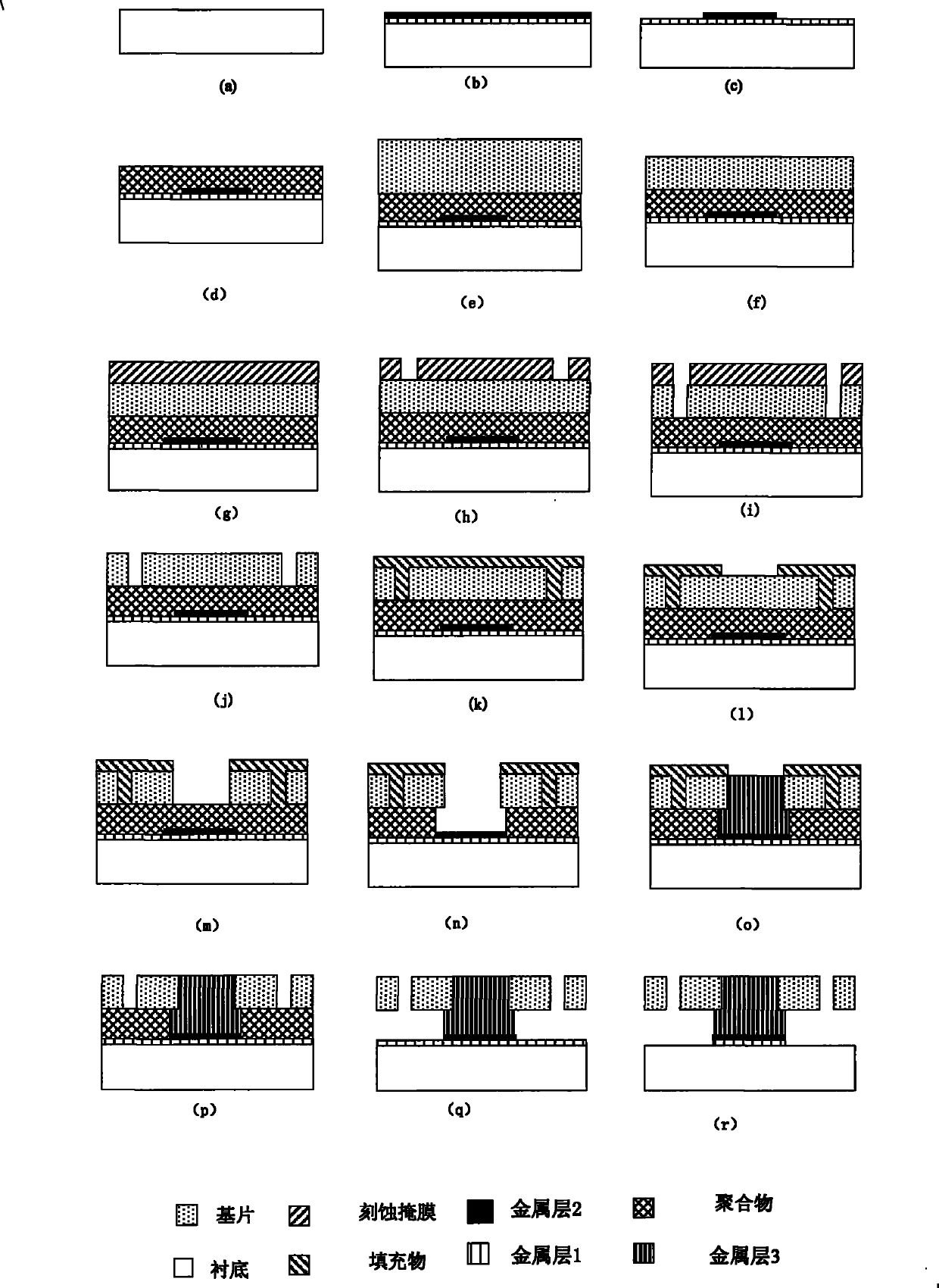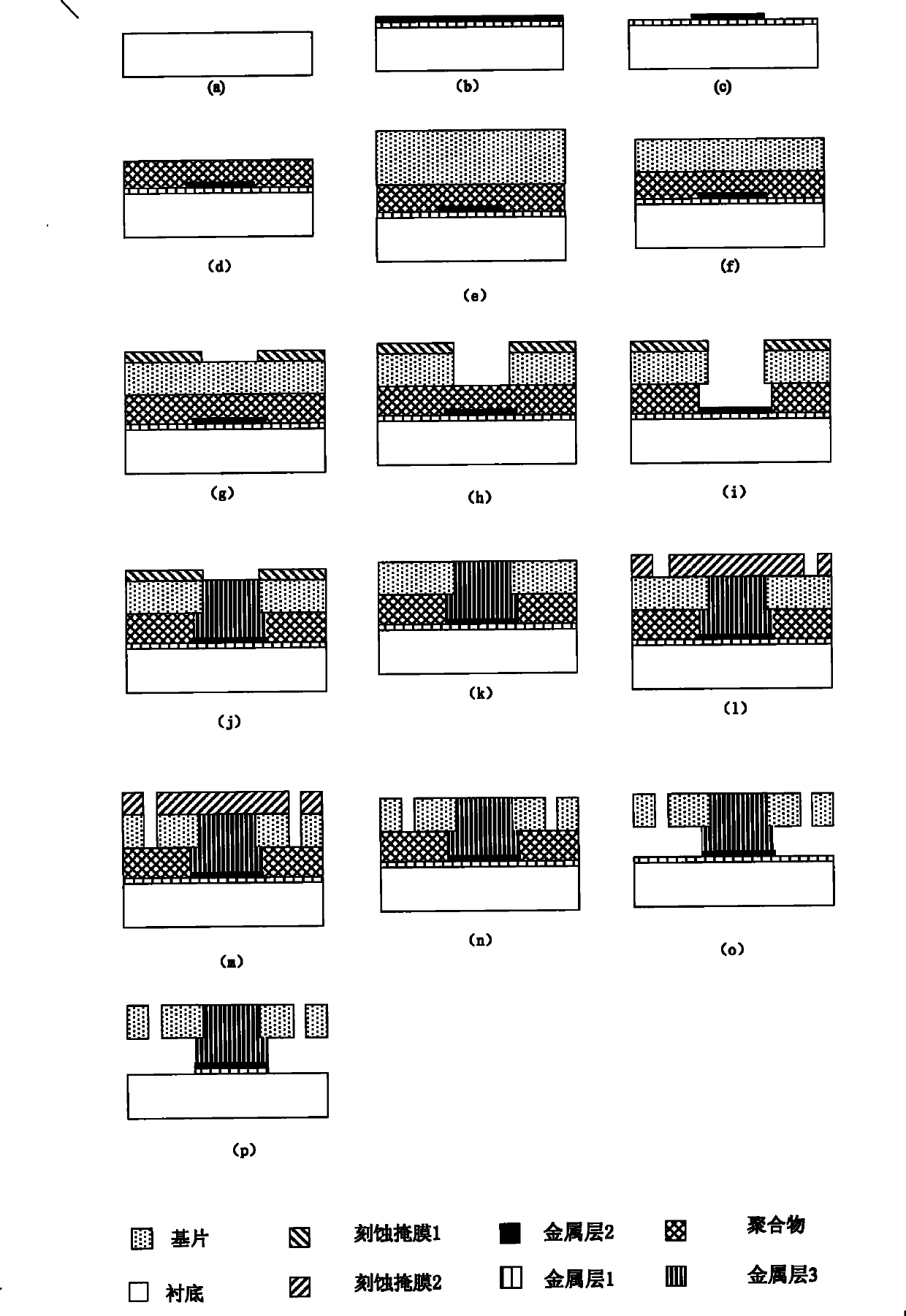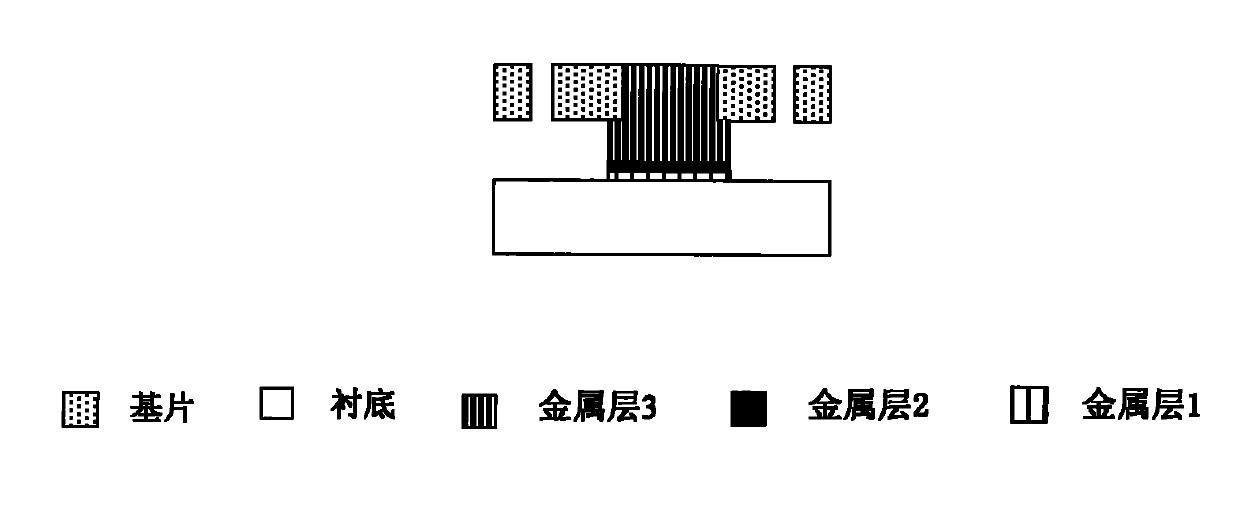On-substrate base sheet micro-processing method
A microfabrication and substrate technology, which is applied in the direction of producing decorative surface effects, microstructure technology, microstructure devices, etc., can solve the problem of not being able to withstand large impacts and overloads, low fracture toughness, and inability to withstand harsh environments. Work and other problems, to achieve the effect of high aspect ratio, high three-dimensional processing
- Summary
- Abstract
- Description
- Claims
- Application Information
AI Technical Summary
Problems solved by technology
Method used
Image
Examples
Embodiment 1
[0029] Embodiment 1, the method of preparing plated holes after first etching through holes is adopted, and the specific steps are:
[0030] 1. Substrate preparation: glass, silicon, metal titanium, aluminum or molybdenum can be used as the substrate, see figure 1 (a).
[0031] 2. Selection of substrate: The substrate material can be silicon, germanium, III-V compound, metal titanium, aluminum or molybdenum, etc.
[0032] 3. Metal or metal compound layer 1 and layer 2 are deposited on the surface of the substrate, and the metal layer 2 is patterned.
[0033] Specifically, in order to ensure that the subsequent electroplating only occurs in the area of the metal layer 2, first deposit a metal layer 1 that does not undergo electroplating on the surface of the substrate, such as sputtering Cr 30nm; then deposit a metal layer 2, such as sputtering Au 500nm ;,like figure 1 As shown in (b), metal layer 2 is patterned, see figure 1 (c).
[0034] 4. The polymer is used as an in...
Embodiment 2
[0048] Embodiment 2, the method of etching the through hole after preparing the plated hole first, the specific steps are:
[0049] 1. Preparation of the substrate: glass, silicon, metal titanium, aluminum or molybdenum can be used as the substrate, such as figure 2 (a) shown.
[0050] 2. Selection of substrate: The substrate material can be silicon, germanium, III-V compound, metal titanium, aluminum or molybdenum, etc.
[0051] 3. Metal or metal compound layer 1 and layer 2 are deposited on the surface of the substrate, and the metal layer 2 is patterned.
[0052] Specifically, in order to ensure that the subsequent electroplating only occurs in the area of the metal layer 2, first deposit a metal layer 1 that does not undergo electroplating on the surface of the substrate, such as sputtering Cr 30nm; then deposit a metal layer 2, such as sputtering Au 500nm ,like figure 2 Shown in (b); metal layer 2 is patterned, see figure 2 (c).
[0053] 4. The polymer is used a...
PUM
 Login to View More
Login to View More Abstract
Description
Claims
Application Information
 Login to View More
Login to View More - R&D
- Intellectual Property
- Life Sciences
- Materials
- Tech Scout
- Unparalleled Data Quality
- Higher Quality Content
- 60% Fewer Hallucinations
Browse by: Latest US Patents, China's latest patents, Technical Efficacy Thesaurus, Application Domain, Technology Topic, Popular Technical Reports.
© 2025 PatSnap. All rights reserved.Legal|Privacy policy|Modern Slavery Act Transparency Statement|Sitemap|About US| Contact US: help@patsnap.com



